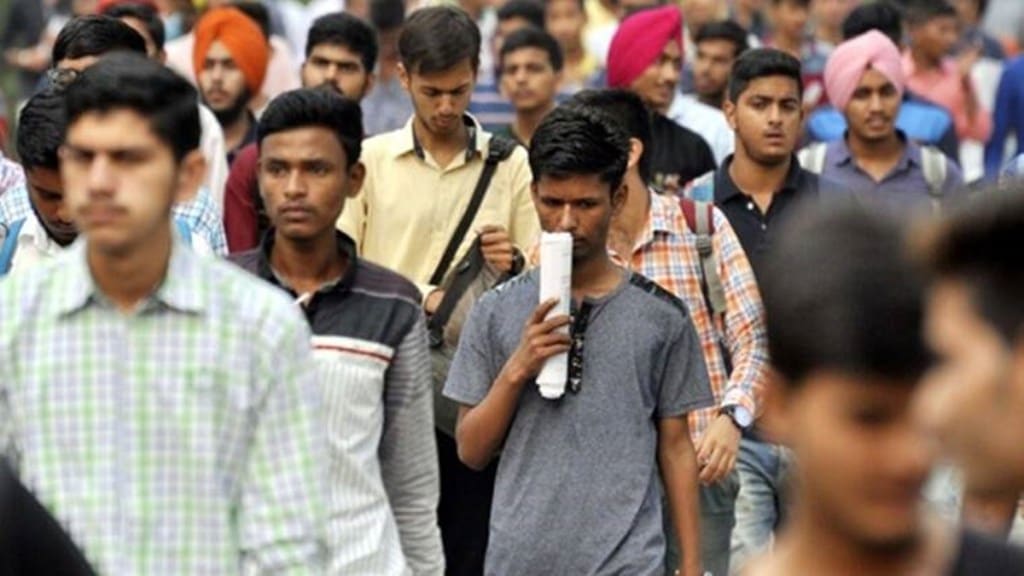The employment scenario in the country hasn’t improved much after the severe second wave of Covid-19 pandemic. Jobs in nine select non-farm sectors stood at 31.8 million in the January-March, 2022 quarter, just 0.4 million more than that of the previous quarter and only 1 million higher than April-June, 2021, when the pandemic’s second wave struck the economy, according to the latest (fourth) round of the quarterly employment survey (QES) by the labour ministry.
The survey, the pioneering round of which was done for the April-June 2021 period, also revealed a steady decline in the share of the manufacturing sector in employment in the nine non-farm sectors (see chart). A salutary development, however, was that the share of women in total employment in these sectors has risen consistently since the first round of QES.
Also read: Gautam Adani says global turbulence accelerates opportunities for India; China to feel increasingly isolated
The nine sectors are manufacturing, education, health, IT/BPOs, construction, trade, transport, accommodation & restaurants. These sectors together account for around 85% of the total employment in establishments having 10 or more people.
According to the report, compared with the October-December period of last year, the share of employment in the reporting quarter has increased in three sectors – healthcare, IT/BPO and financial services. It fell in manufacturing, education, and construction sectors and remained static for trade, transport and accommodation & restaurant sectors.
“Manufacturing sector accounts for the largest percentage (38.5%) of the total number of workers, followed by education sector with 21.7%, IT/BPO sector with 12% and health sector 10.6%,” said the latest QES report.
QES is different from Periodic Labour Force Survey (PLFS). While the former provides demand side employment survey, the later looks at supply side of employment.
Also read: Foreign trade policy extended by 6 months to March ’23
The fourth QES revealed that the share of the manufacturing sector in the total employment deteriorated during the January-March period of the current year to 38.5% compared with around 39% in each of the previous two quarters and 41% in the April-June period of last year. Women’s share in the overall employment has increased marginally to 31.8% from 31.6% in the October-December period of last year.
While releasing the report, union labour minister Bhupender Yadav, said, “the employment is showing an increasing trend in the selected sectors of the economy.” According to the sixth Economic Census (2013-14), these nine selected sectors taken together were employing 23.7 million employees.
According to CMIE, all-India unemployment rate in January, February, and March this year was 6.56%, 8.11% and 7.57% respectively compared with 7.74% in October, 6.97% in November and 7.91% in December of last year.
The QES is a part of the All-India quarterly establishment-based employment survey (AQEES), which also includes an informal sector survey, covering establishments employing less than 10 people, being done by the Labour Bureau.

